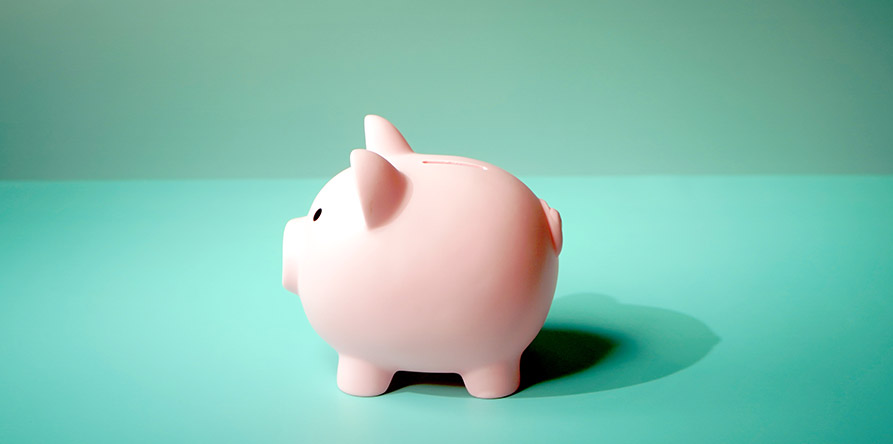
How to ensure you hit your TFSA limit every year
Many things in life compete for your attention – and your money. Finding time and energy to do it all can be challenging, but maxing out your Tax-Free Savings Account (TFSA) so you can enjoy all the other things doesn’t have to be.
Here are four strategies to help you get more out of this account.
1. Consider carry-forward room.
TFSAs have an annual contribution limit, which the federal government sets yearly. You can also carry forward any unused contribution room from previous years. Plus, any money taken out of a TFSA can be added back a year later. For instance, if you took money out of your TFSA in 2023, you could put it back in 2024 or later.
How much contribution room you have depends on your age. TFSA contribution room began accumulating in 2009, the first year it was introduced. That means someone 18 or older in 2009, who opened their first TFSA in 2024 and has never contributed, would have $95,000 to use. (Check out the chart below.)
Someone who came of age after 2009 can contribute to a TFSA for the years they were 18 and older. For example, if you turn 30 in 2024, you are able to contribute up to $80,000 to your TFSA, which is the total cumulative contribution room from 2012 to 2024.
The best part about carry-forward room is that if you didn’t get a chance to contribute when you were younger, you’ll still have that room to use to top up your TFSA when you’re ready to invest.
Annual TFSA dollar limit
| 2009 to 2012 | $5,000 |
|---|---|
| 2013 and 2014 | $5,500 |
| 2015 | $10,000 |
| 2016 to 2018 | $5,500 |
| 2019 to 2022 | $6,000 |
| 2023 | $6,500 |
| 2024 | $7,000 |
Source: CRA, TFSA contributions
2. Make consistent TFSA contributions.
Contributing to a TFSA is easy: either get your advisor to move money into one or transfer funds yourself at a discount brokerage or bank. What’s harder is coming up with the cash. One strategy is to set up pre-authorized contributions (PACs), which means you automatically move money from a chequing account into your TFSA. You can set up weekly, bi-weekly or monthly transfers, although a popular approach is to align the withdrawal with when you receive your paycheque.
For instance, for an annual TFSA contribution limit of $7,000, consider setting up a PAC of $583.33 each month for 12 months. If you want the money to come from a bi-weekly paycheque, the sum would be $269.23. If you’re going to meet your financial goals, you’ll also need to put those payments into securities that have the potential to grow, such as mutual funds, exchange-traded funds (ETFs) and potentially other equity and fixed income securities.
But be careful about overcontributing to your TFSA. If you do, you’ll be forced to pay monthly tax on the excess amount. You can confirm your TFSA contribution room by logging into the CRA’s My Account for Individuals portal. Note that the information may not be up to date, depending on the time of year you log in. You can also call the CRA’s Tax Information Phone Service (TIPS) at 1-800-267-6999 for information.
3. Diversify your TFSA investments.
Another way to maximize your TFSA is to have a mix of investments. That could mean holding different assets, such as mutual funds, ETFs, stocks and bonds, or funds in different sectors and geographies. Diversification helps reduce risk when markets are volatile. To keep it simple, consider all-in-one ETFs, which handle the diversification for you.
It’s worth noting that not all investments qualify for a TFSA. According to the Canada Revenue Agency, you can put cash, mutual funds, securities listed on a designated stock exchange (like the Toronto Stock Exchange or NASDAQ), guaranteed investment certificates, bonds and certain shares of small business corporations in a TFSA. There are some exceptions, however; land and ownership units, for example, are a few of the investments that don’t qualify for the account.
Investors unsure whether an investment qualifies should consult a financial advisor before putting the asset into their TFSA.
4. Take advantage of financial windfalls.
Using unexpected financial gains, such as tax refunds, work bonuses or an inheritance, to put in your TFSA is another way to maximize this account. While an impulse purchase like a vacation or a new piece of tech might be tempting, consider the long-term gains you could get from moving all or some of that money into your TFSA.
If you’re fortunate enough to have maxed out your registered accounts, consider keeping the higher-taxed dividend and interest-generating investments inside your TFSA and putting the more tax-efficient capital gains investments outside of it. It all goes back to taking advantage of the benefits of the TFSA to achieve your financial goals.
Need more information on TFSAs? Get some advice from a financial advisor.
Maximizing your TFSA and combining it with other investment vehicles, such as RRSPs or non-registered accounts, can be complicated. Many Canadians gain tremendous value by consulting a financial advisor who can help them tailor their TFSA strategy based on their financial goals, risk tolerance and overall financial plan.


